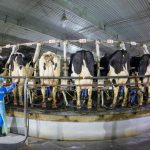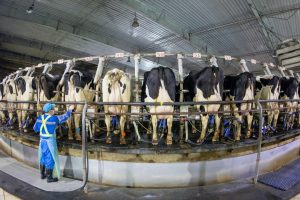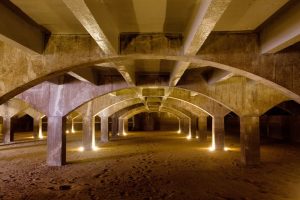Bogotá faces water rationing, due to the low level of the reservoirs that supply the city. Total, The aim is to make an 11% reduction in the city's consumption, since the Chingaza system, which supplies about 70% of the water of the city and surrounding municipalities, is at 17.9% of its capacity.
(Read more: Asoenergía warns of possible gas shortages in 2025 and asks for action)
The Mayor's Office defined that there will be nine sectors with cuts for 24 hours and that it will restart on the tenth day.
Natasha Avendaño, manager of the Bogotá Water and Aqueduct Company, explained that the measure will be in force indefinitely until conditions improve and that the need to make the measures more or less restrictive will be analyzed every 15 days.
It was also highlighted that 91% of consumption is from homes and 58% is used for personal hygiene, another 23% for the kitchen, while 10% is used in toilets. For this reason, these are the consumptions that should be restricted the most.
What is the consumption of Bogotá?
The consumption of all areas in the most recent cut is 17.44 cubic meters per second, including all areas of the city and surrounding municipalities that the company supplies.
The objective is to reduce 11%. How much would it mean compared to real consumption and what effect would it have on the rate of discharge?
The three systems will not be affected by these measures, only Chingaza and the Aggregate North system. El Dorado (which supplies Usme) will not have restrictions, although we maintain the invitation to have responsible consumption.
With the measure we are taking we expect a saving of 11%, that is, 2 cubic meters per second and reaching up to about 15 cubic meters every second.
Now, the rate of discharge will not only depend on this, but also on the rains we have. That is why we monitor these variables daily.
(Read more: 'It is not fair that we pay for the crisis generated by the north')
How have you seen the level of water contributions in recent days?
They are very low, we have had days with better rains that allow us to increase reserves, but there have been others with no contribution. That is why it is very important to take into account forecasts, which also have a level of uncertainty.
It was supposed to rain towards the end of March, but it didn't. We made some moves to have the greatest amount of water available from Tibitoc (Water Treatment Plant in Tocancipá), anticipating this.
However, there was not the rainfall that was expected and therefore we had to take these measures to reduce consumption to allow us to guarantee that the water we have reaches us.
How long will the restriction initially last?
The restriction is initially indefinite. Every 15 days we will analyze and announce whether the measures remain in place, become more restrictive or can begin to be relaxed.
That, given the critical condition we have, is probably not going to happen in the first round of cuts.
It is very important that we are aware that we have to wait for the climate trend to change and at this moment it has not even begun to change.
What conditions must be met for restrictions to be relaxed or tightened?
It will depend on how Chingaza's level behaves. If it continues to fall because there is no rain in a way that implies updating our hydrometeorological models and shows us a shortage, we would have to analyze whether there is a need to increase the restrictive measures.
If consumption is not decreasing, we would also have to make this decision.
(See: What are the chances that Bogotá's energy supply is at risk)
Natasha Avendaño, manager of EAAB
(See: The country's electrical system, in critical condition to meet all demand)
How would hardening occur in the cuts?
We will have to see that in due course. For the moment we start with a measure that is appropriate for the situation that we must control and in the event that we see that we have to reduce more consumption we will do so with the alternatives we have.
Has the possibility of 'punishing' excessive consumption been analyzed?
There is a regulation from the Water Regulatory Commission (CRA), but it is difficult to apply in our case because it is a combined system. The resolution states that when users are identified who are depleting a source due to excess consumption, it will be applied to them.
But it is a measure that we continue to evaluate so that we can take it as part of the measures that we are presenting.
What is the effect of losses and how can they be controlled to prevent them from affecting?
We have new management that helps us centralize analytics and loss recovery and consumption management information. This helps us improve the capacity of the networks and attack situations of fraud and others that alter our water supply.
The losses are close to 34% of the total.
Will there be tank trucks in areas where there are cuts?
Only in the event that the individual supply infrastructure that institutions must have as a rule is insufficient. In that case we will have to provide support with tank trucks. It will not be for homes or businesses, only for institutions such as hospitals, schools and others when it is insufficient.
What are the recommendations for homes?
We recommend that you continue saving, being very aware of the need to remain alert and have good consumption practices. Likewise, when you are going to stock up for the days of cuts, do not waste the water in case it is more than what is needed.
(See: Water rationing in Bogotá: why will it not be implemented in Usme?)
DANIELA MORALES SOLER
Journalist Portfolio












